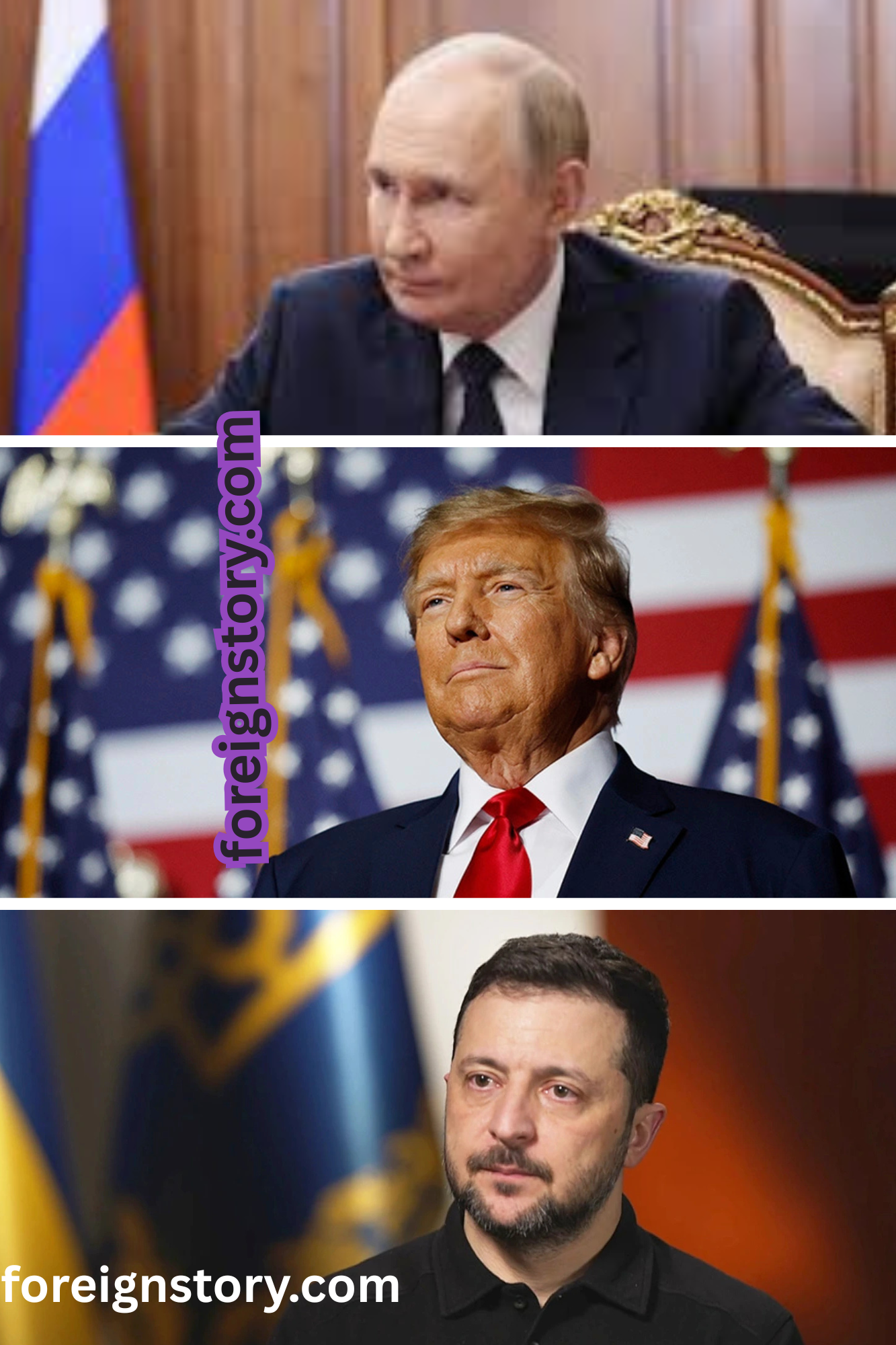Since the 2022 invasion, Volodymyr Zelensky has emerged not only as a wartime leader but as a diplomatic figure whose every move—from attire to negotiation strategy—carries powerful symbolism. In this article, we’ll explore how Zelensky navigates relations with Putin, the significance of his fashion choices at the White House, his interactions with EU leaders, and the evolving Russia–Ukraine conflict.
With insights into his pragmatic diplomacy and recent developments on the war’s frontlines, readers will gain a comprehensive, up-to-date understanding—woven together in a flowing, human-centered narrative consistent with the tone of ForeignStory.com.
Zelensky Approaches Putin: Strategy and Diplomacy
Engaging Putin — Firm but Open to Negotiation
Zelensky has maintained a firm policy: no surrender of Ukrainian territory, rejecting Putin’s maximalist demands. He insists that any talks must begin from the status quo of frontlines and constitutional boundaries.
Still, Zelensky signals readiness for dialogue without preconditions—though he sees Putin aiming for a ceasefire that allows Russia to regroup. Analysts remain skeptical: they note Putin may use negotiation optics to stall or extract concessions, without genuine peace intentions.Read more: foreignstory.com
Peace Summit Prospects: Budapest, Geneva, or London?
The U.S. is brokering talks potentially in neutral venues like Budapest or Geneva, possibly involving Trump, Zelensky, and Putin. However, a peace summit faces hurdles: Putin’s insistence on territorial gains struggles against Zelensky’s steadfast refusal.
Zelensky at the White House: Style as Symbol
Fashion Diplomacy — Military Roots Meet Formal Signals
Zelensky’s attire is meaningful. In earlier visits, his choice of casual all-black jacket, shirt and slacks by Ukrainian fashion designer Viktor Anisimov—was a symbol of Mourning and remembrance, Unity and defiance, Ukrainian identity through fashion with front-line troops, but also drew criticism in some quarters.
By August, he adapted: arriving in the Oval Office in an all-black, suit-style jacket without a tie designed by Ukrainian creators.
A Wardrobe that Speaks Volumes
The updated look struck a balance—dignified yet still rooted in wartime identity. It earned praise from reporters who once mocked him. Zelensky replied with humor: “You are in the same suit. I changed mine.”
This blend of formal and military elements becomes a diplomatic tool, reinforcing strength and resilience even within the corridors of power.
EU Leadership & International Support
European Commitment and the Coalition of the Willing
Zelensky continues to garner strong European backing. At summits such as the “Coalition of the Willing,” he’s joined by leaders including Macron, Friedrich Merz, and Meloni, signaling pan-European solidarity.
These meetings drive unified political support and potential security frameworks beyond NATO, while sustaining pressure for Ukraine’s sovereignty.
War Update & Negotiation Outlook
Where the Negotiations Stand Now
Efforts to secure peace are intensifying, yet genuine breakthroughs remain scant. Despite numerous diplomatic efforts—including trilateral talks—Russia persists with extreme demands, and the conflict continues to escalate.
Trump’s ambiguous positions and shifting support create uncertainty. Europe strongly urges concrete defense guarantees for Ukraine and rejects any forced territorial compromise.
Zelensky’s Path Forward
Zelensky remains resolute: he won’t yield Ukrainian land. He seeks long-term guarantees akin to NATO’s Article 5. Ukrainian resilience, supported by Western arms, remains central to holding back Russian advances.
FAQ
What is Zelensky’s stance on meeting with Putin?
He is open to face-to-face discussions but refuses to cede Ukrainian territory or accept preconditions that violate sovereignty.
Why did he change his outfit at the White House?
His updated attire was a conscious diplomatic gesture—more formal than before, yet still tied to wartime identity, blending respect and solidarity.
Which EU leaders support Ukraine?
Major figures like Macron (France), Friedrich Merz (Germany), and Meloni (Italy) are vocal supporters, often rallying support through coalitions of European nations.
Are peace talks showing progress?
While diplomatic efforts continue—including trilateral talks and summit proposals—Russia’s hardened stance and unclear U.S. positions continue to complicate progress.
Conclusion
Zelensky’s leadership exemplifies the melding of symbolism and substance. His diplomatic strategy—grounded in unwavering principles, sartorial nuance, and global alliance-building—underlines a commitment to sovereignty and peace. While peace remains elusive under current conditions, Zelensky’s resilience—and his message through both negotiation and attire—remains compelling.
